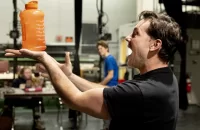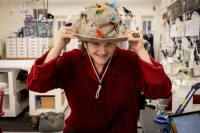
One level below the Schaeffer Theatre stage, the carpenter shop is buzzing with sound. Natalia Jacobs ’26 of Amherst, Mass., is busy vacuuming dust from a set of French doors, recently pulled out of storage, before painting them a shade of mossy green.
Gideon Berrie ’26 of New York City is carrying pieces of lumber up to the stage, which is in the middle of a huge transformation: By March 16, opening night of the Bates theater production of Much Ado About Nothing, the set will transport the audience to the backyard of a summer estate in Bar Harbor, Maine, in September 1945.
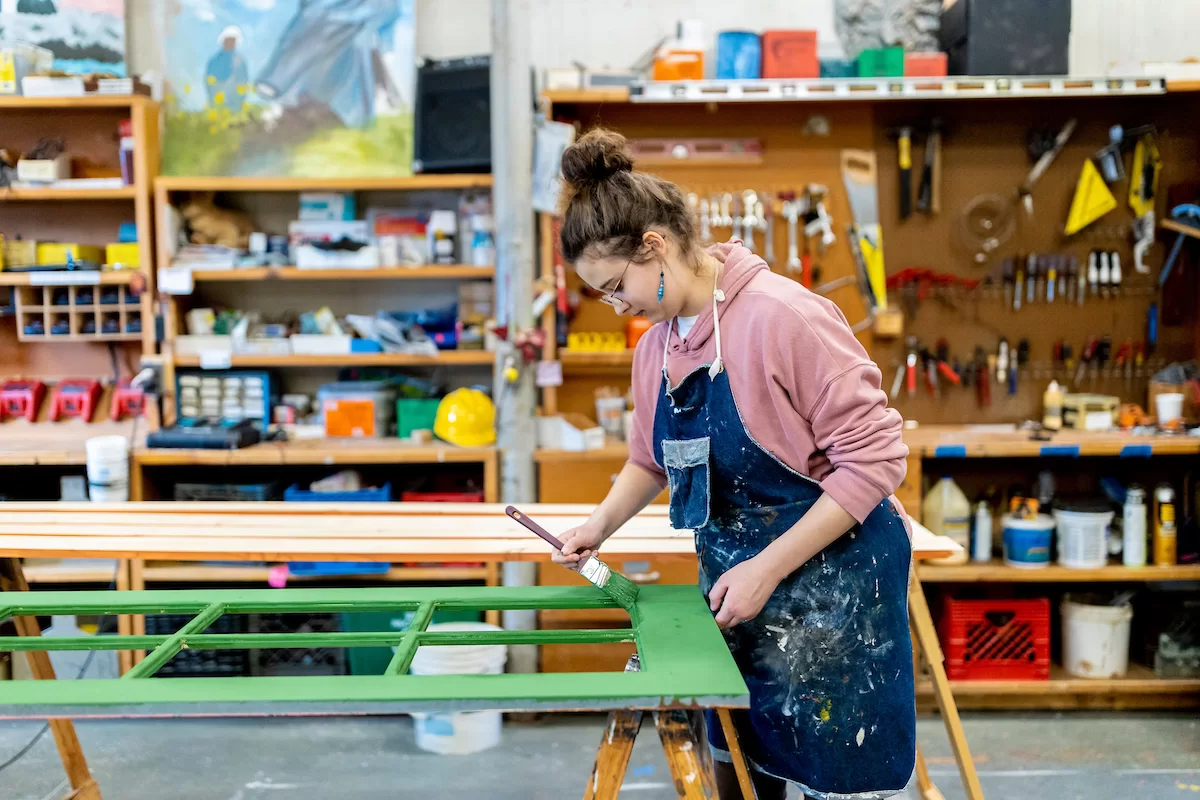
The set is anchored by a 16-foot, two-story facade evoking the exterior of a famed Mount Desert Island “cottage,” otherwise known as a mansion. On the second level, the newly painted French doors will open onto a balcony overlooking a garden, bandstand (where a five-piece band will perform), trellis, and lawn, which is currently rolled up and sitting in the entrance to the theater, waiting to be patchworked onto the floor.
All this construction is getting a hand from one of the experts brought in for the production, Aidan McDowell, a carpenter who usually works on real houses — and most recently, tiny houses — and not facades that last only a few weeks.
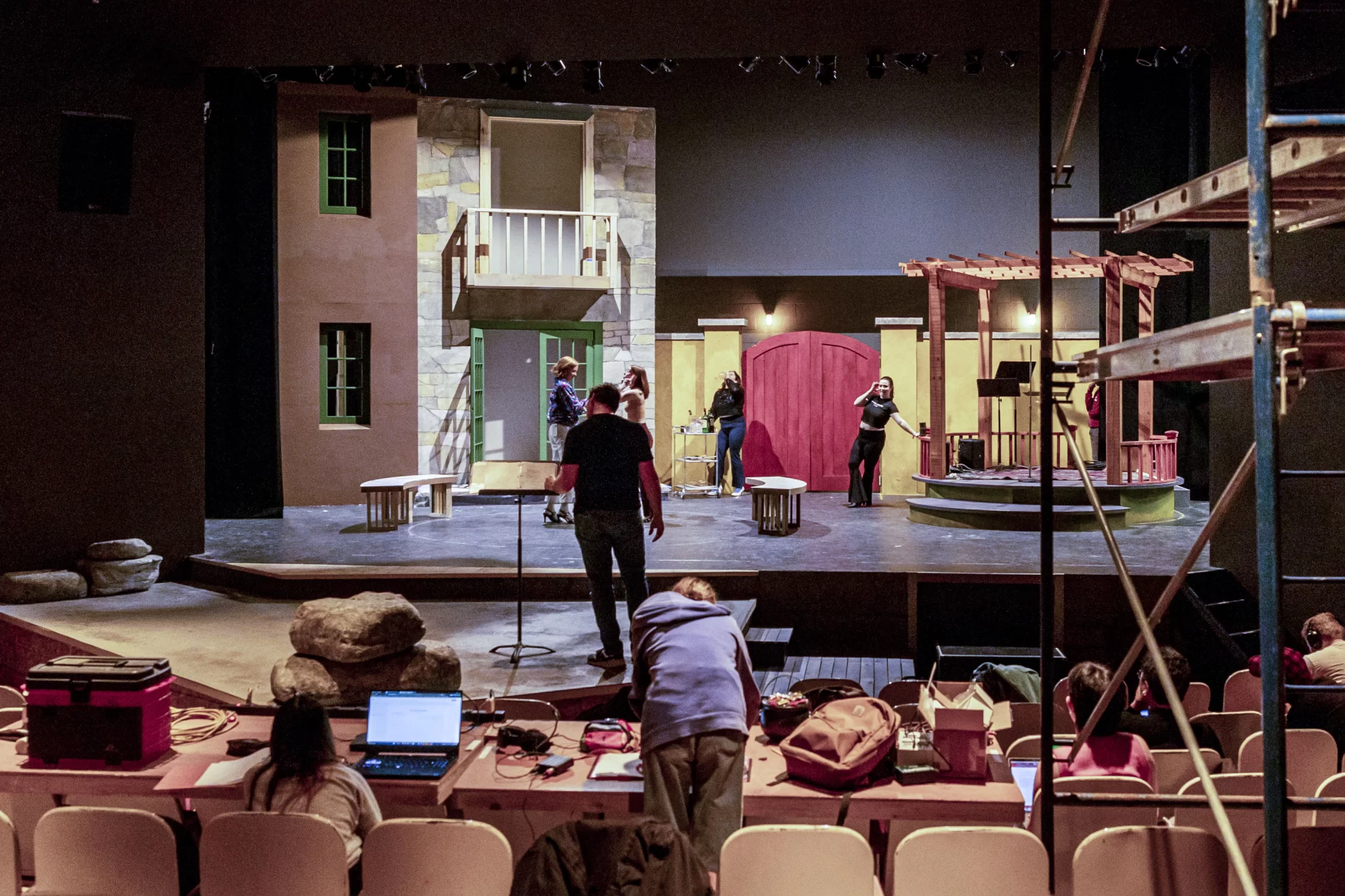
McDowell, who lives in Pennsylvania, has worked on other Bates productions, and while he’s got a slew of student workers helping in the carpentry shop, many haven’t quite honed their talents.
And that’s part of what draws McDowell back to Bates; in fact, for this gig, he drove through the night in early January for the start of the semester. “It’s definitely a lot of fun to work with students and teach them how to work with their hands.”
Justin Moriarty, the technical director for theater and dance, oversees the work done in the carpentry shop. Whether it’s learning how to use a saw, properly calculate measurements, or even how to work from a plan on paper, the skills that students in the shop gain are both practical (to fix that sagging bookshelf) “and really empowering for students,” he says.
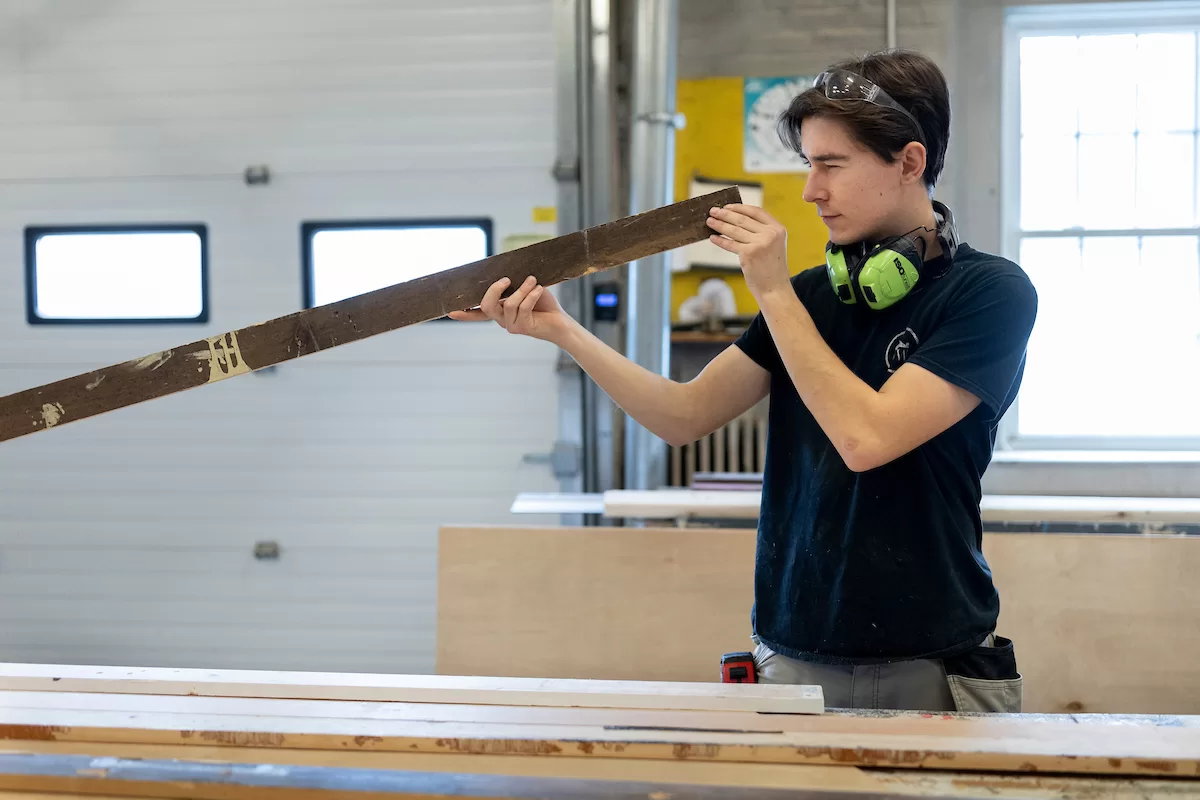
“I’ll explain it, and then I have them do it. I never do it myself; it’s about them doing it,” Moriarty says. “And then I’ll say, ‘Here’s some tips about this.’ And then if they’re still having trouble, then I give them hints until they get it. And so the empowering piece of that is they get it. It’s not because I am telling them exactly what they need to do, it’s because I’m working with them as individuals.”
For Jacobs, who did theater in high school, this is her first time working behind-the-scenes and helping build a set. “It’s kind of cathartic,” she says. “It’s nice to take a break and do something hands-on and creative.”
She’s also excited to take her skills home, to her father, who used to work in carpentry. She gets to do a little bit of everything. “One day I’ll be helping with the siding, which involves more power tools, and today I’m painting. You really develop a diverse range of skills.”
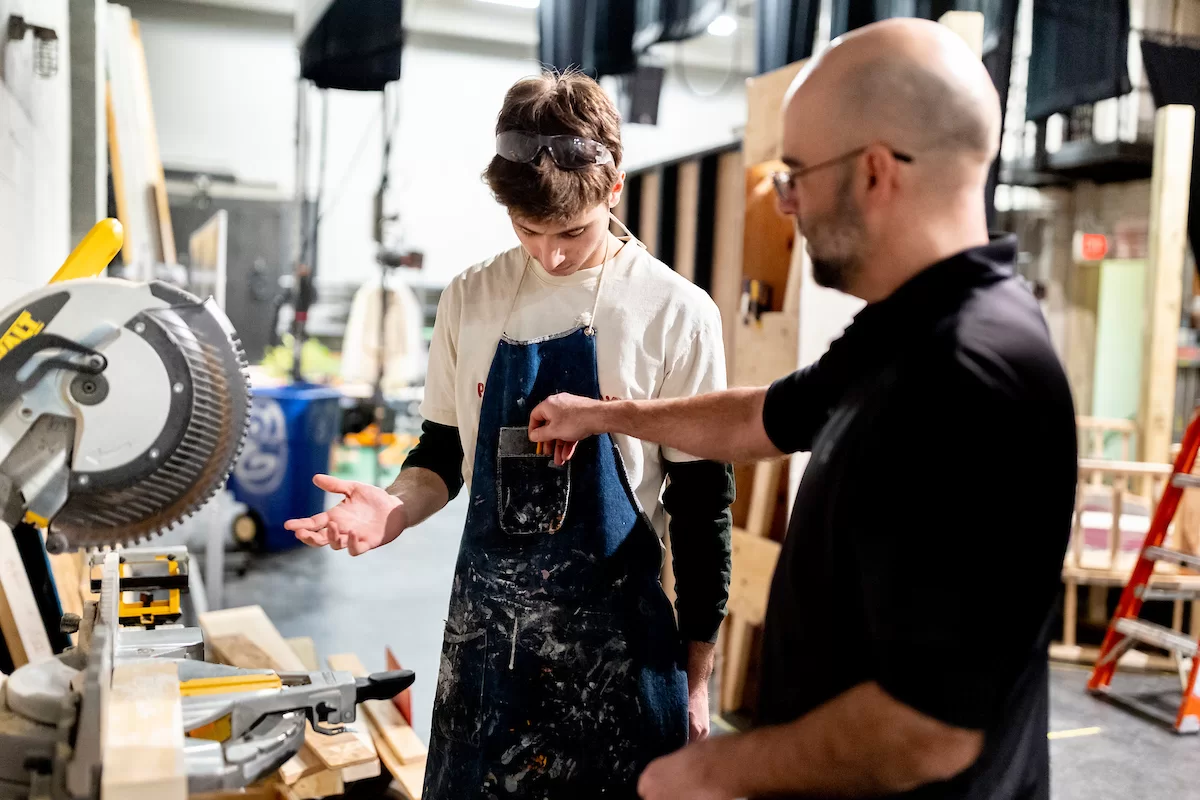
The Much Ado set was designed by Judy Gailen, who has designed theater and opera scenery throughout the U.S. for more than three decades, at Bowdoin since 2000 and for Emerson and Dartmouth colleges, Princeton University, and the Yale Repertory Theatre.
Scenography wasn’t her first career — she also has a background in mime, clowning, and movement theater, as well as graphic design — and it probably won’t be her last, she laughs.
When she thinks about designing a set, Gailen first analyzes the text. “I need to think about what the story’s telling; is it a comedy? Is it a drama? For me, designing for Shakespeare is always hard because Shakespeare was written in a time where they did not really have scenery, so he describes everything.”
The goal is to create a set that evokes the place, and is immersive enough that the audience isn’t confused, but doesn’t overpower the action onstage.
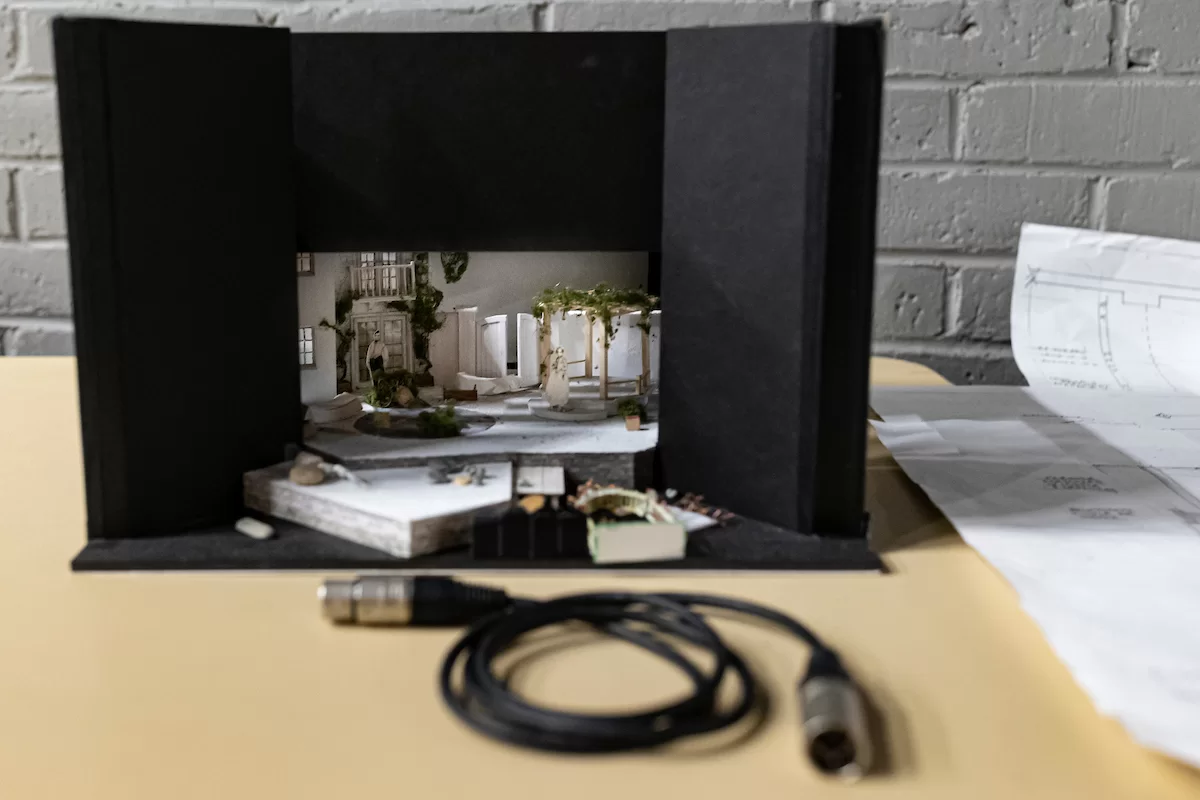
So the “cottage” that now dominates the Schaeffer stage can be big enough for a balcony scene, but not too big, and the garden gate needs to be striking, but not a scene-stealer. It’s all about the balance.
One of the most tedious parts of this set in particular, she says, is the rocks, which will help to bring the seas to the stage. “There are lots of rocks in Maine, and rocks are hard to paint. So I tried to cut down the number of rocks I have to paint, which is why the garden wall is not a rock wall — which is probably what it would be.”
A good set transports the audience to a time and place as soon as they glimpse the stage, she explains.
She quotes Robert Edmond Jones, an American stage designer in the early 20th century, who said that stage design “should be addressed to [the] eye of the mind… It echoes, it enhances, it animates. It is an expectancy, a foreboding, a tension. It says nothing, but it gives everything.”
“I’ve seen shows where I come in, I sit down, I don’t know what the heck to expect from the play, but the design is such that I trust that I will find out — eventually,” said Gailen.
“So a lot of it is about trust from your audience.”
